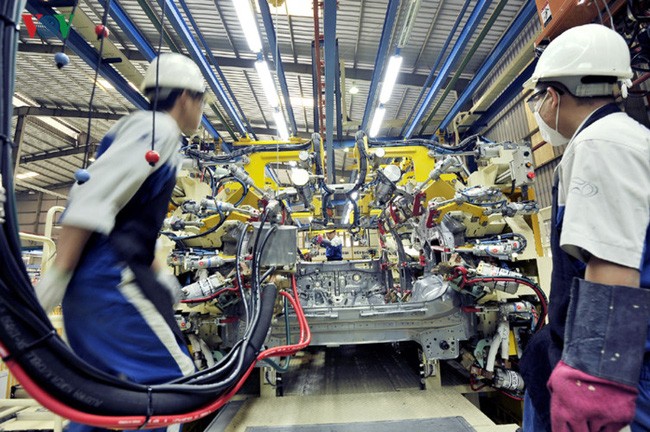
Vietnamese economy accelerates thanks to recovering manufacturing: Asia Perspective
Latest
 |
| Automobile manufacturing at Hyundai Thanh Cong factory. (Photo: VOV) |
According to the report, the country’s economic expansion in Q4 was mainly driven by the manufacturing sector which expanded 8.63 percent compared to the same period last year.
As the spread of COVID-19 was effectively controlled in Viet Nam, and the Free Trade Agreement with the European Union came into effect, Viet Nam’s manufacturing expanded by 5.82 percent in 2020 which paved the way for the country’s economic growth.
Overall, the industrial sector’s added value grew 4.8 percent from the previous year, contributing to the country’s GDP growth of 2.91 percent in the year, it said.
According to Asia Perspective, merchandise export turnover in Q4 increased by 13.3 percent year on year and amounted to 78.9 billion USD. Imports expanded by 15.7 percent year on year to 76.4 billion USD. For the full year, exports grew 6.5 percent and imports gained 3.6 percent with a trade surplus of 19.1 billion USD – the highest value recorded since 2016.
Viet Nam’s Consumer Confidence Index reached 121 in Q4 2020, indicating a recovery from Q2 when the same number was 117, which was the lowest number recorded since 2017. Effective containment measures ensured the upturn of domestic consumer services, as well as domestic travel and tourism.
As a result, total domestic retails and consumer services in Q4 were approximately 60.5 billion USD, increasing by 6.4 percent from Q3 2020 and 8.0 percent year on year, according to the report.
It pointed out that FDI in Viet Nam grew by 1 percent year on year during Q4 of 2020. However, the total annual FDI declined by 2 percent from the year before.
While the Republic of Korea (RoK), Hong Kong, and Singapore were the largest investors in 2019, China became Viet Nam’s third-largest investor in 2020, joining Singapore and the RoK in the top 3. The manufacturing sector remained the most attractive for investors, accounting for 47.7 percent of the newly registered FDI in 2020.
Meanwhile, the Japan Research Institute held that factors helping Viet Nam enhance its advantages and promote growth last year included the shift of production bases by companies and the signing of many positive free trade agreements. It underlined that export is the factor making the Vietnamese economy stable. In 2020, Viet Nam posted a 7 percent growth in export, higher than other ASEAN member countries.
According to JRI, in order to maintain stable growth in the medium and long term, Viet Nam should strengthen human resources training in industrial sectors with high added values, which requires the country to reform its regulations and a complete legal corridor on bankruptcy settlement, and create favourable mechanism in dealing with shareholders’ disputes.

















